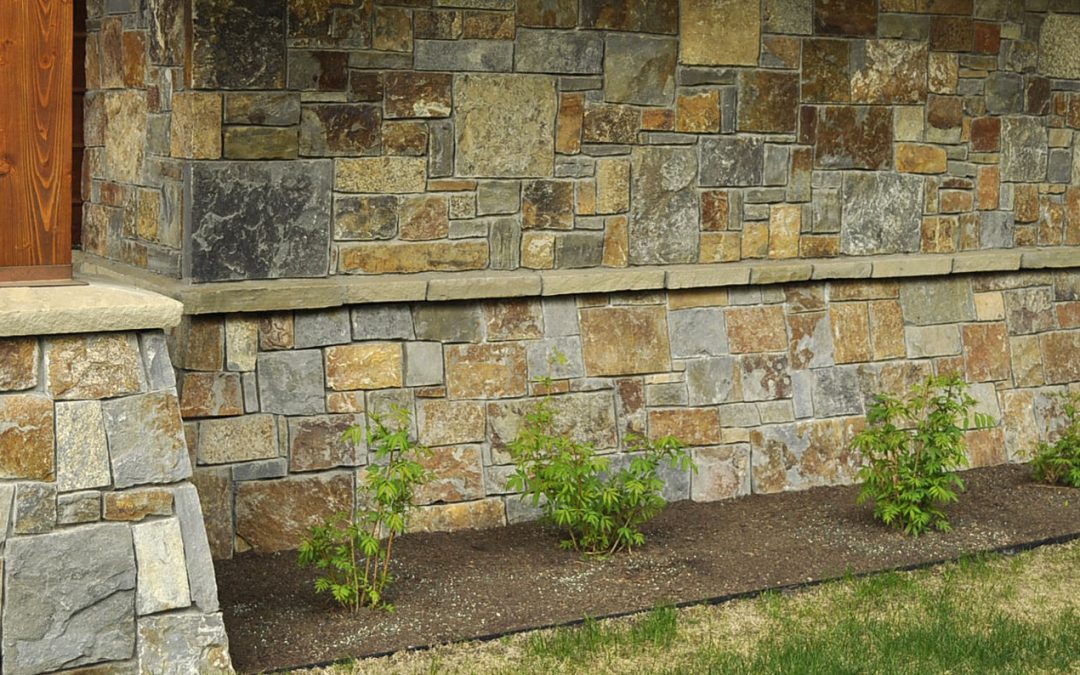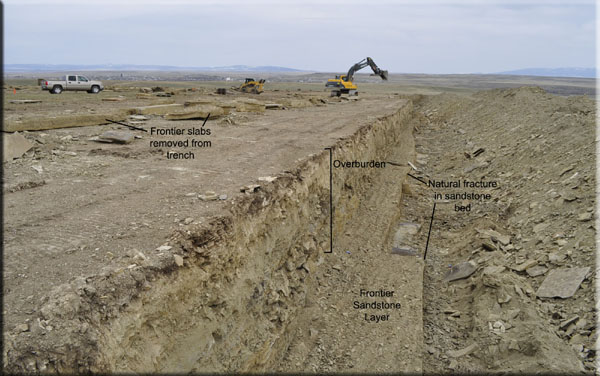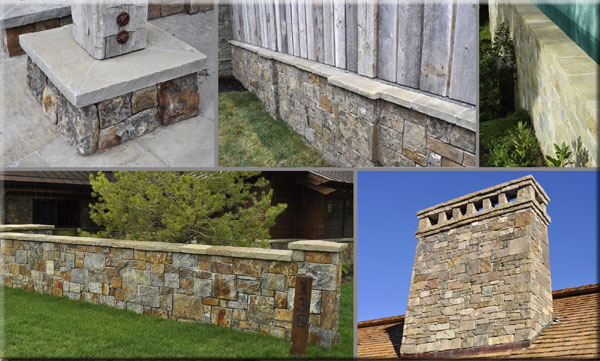Frontier Sandstone wall cap is installed with both the top surface and edge(s) exposed. To look attractive, the cap thickness must be consistent through the length of the wall. This is more difficult with natural-cleft stone like Frontier where the slab thickness is natural (and variable), not sawn. The process of making cap usually consumes the best cutting stock that we get from our quarry. Click image to enlarge.
The Source
The process starts at the trenches where we remove Frontier slabs. The best slabs for making cap have two good surfaces, have a consistent thickness, and are large enough for efficient cutting. We rarely have an over-abundance of perfect cap cutting stock.
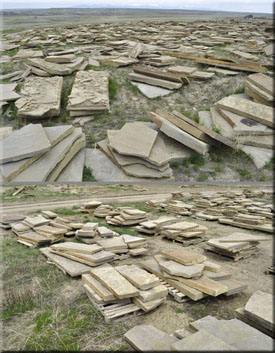 Sorting, Sorting
Sorting, Sorting
Cap cutting stock must be sorted out of the flow of stone that comes from a trench. Since it is our best, flattest, most consistent slab material, it is also usually in short supply.
The top image at right is the raw material from the trench, whereas the lower image is the sorted stock from which various sizes of cap will be cut.
This may look like a lot of slabs; however, very little of it ends up as usable cap.
Splitting
Once the cap cutting stock is sorted out, it is sent into “breaker tents” where it is chopped to specified widths on hydraulic stone splitters. To make the most efficient use of typically limited cutting stock, many different orders are made at the same time.
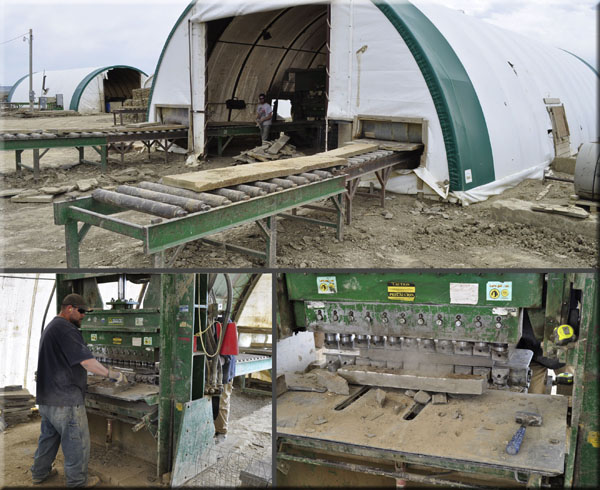
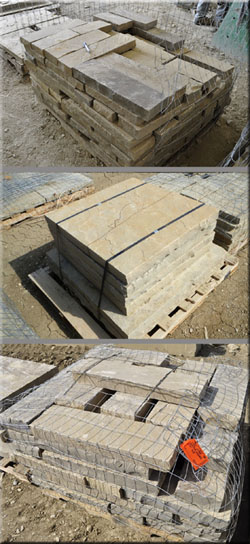 Lead Times
Lead Times
The width and thickness of Frontier cap is usually specified on a project-by-project basis and we rarely have inventory cap available. Ordering cap well in advance of when it is needed is critical, as we commonly fall six to ten weeks behind in production. Cap that is over 18″ wide is particularly slow due to the large cutting stock that is needed.
Installed
Frontier Sandstone cap adds rustic beauty to any stone project and the warm earth-tone colors compliment many different types of wall stone.

